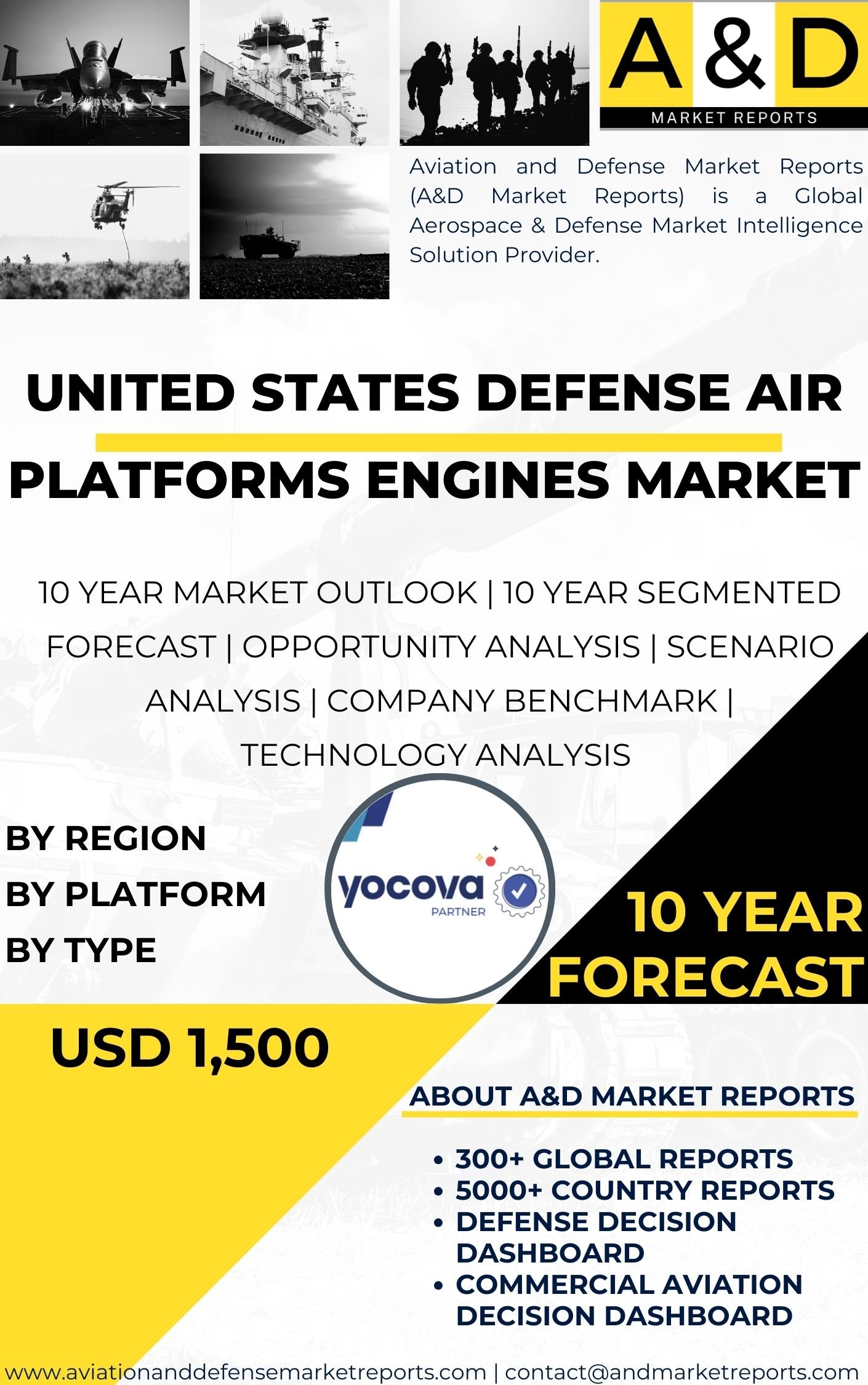Description
The United States Defense Air Platforms Engines represent a critical component of the country’s military aviation capabilities, powering a diverse range of aircraft that serve various strategic and tactical roles. These engines are designed and developed to meet the demanding requirements of modern aerial warfare, providing superior performance, reliability, and efficiency. From fighter jets to transport aircraft, helicopters, and unmanned aerial vehicles (UAVs), the engines used in U.S. defense air platforms play a pivotal role in ensuring air dominance and the successful execution of military operations.
Fighter Jets:
Fighter jets are at the forefront of aerial combat, tasked with achieving air superiority, engaging enemy aircraft, and conducting ground-attack missions. The United States employs several types of engines to power its fighter aircraft. For example, the F-22 Raptor, one of the most advanced fighter jets globally, is equipped with Pratt & Whitney’s F119 engines. These high-thrust, afterburning engines provide exceptional performance, including supercruise capability, allowing the F-22 to sustain supersonic speeds without using afterburners, conserving fuel and extending its range.
The F-35 Lightning II, another cutting-edge multirole fighter, employs different engine variants, such as the Pratt & Whitney F135 and the General Electric F136. These engines are optimized for the F-35’s unique requirements, combining high performance, fuel efficiency, and vertical takeoff and landing (VTOL) capabilities in the case of the F-35B variant.
Transport Aircraft:
Transport aircraft play a crucial role in supporting military operations by transporting troops, cargo, and equipment across long distances. The U.S. military uses engines from various manufacturers to power its transport aircraft fleet. For example, the C-17 Globemaster III, a strategic airlifter, relies on four Pratt & Whitney F117-PW-100 turbofan engines, which provide substantial thrust and fuel efficiency, enabling the aircraft to carry heavy loads over extended ranges.
Similarly, the C-130 Hercules, a versatile workhorse used for tactical airlift and other missions, utilizes various engine types, including Rolls-Royce AE 2100 and Allison T56 turboprop engines. These engines offer reliability and efficiency, making the C-130 an essential asset for a wide range of military operations, including troop and cargo transport, aerial refueling, and humanitarian missions.
Helicopters:
Helicopters are vital for conducting a variety of military tasks, including troop insertion, reconnaissance, and combat support. The United States equips its helicopters with engines optimized for performance, maneuverability, and survivability in challenging environments. The Apache AH-64, one of the Army’s premier attack helicopters, employs twin General Electric T700 turboshaft engines, providing the aircraft with exceptional agility and firepower.
The UH-60 Black Hawk, a versatile utility helicopter, is powered by two General Electric T700-GE-701D engines. These engines deliver the power required for carrying troops, equipment, and performing critical search and rescue missions. Additionally, the Marine Corps’ MV-22 Osprey tiltrotor aircraft, designed for vertical takeoff and landing, combines the benefits of both helicopters and fixed-wing aircraft. It is powered by Rolls-Royce AE 1107C-Liberty turboshaft engines, enabling it to efficiently transition between vertical and horizontal flight.
Unmanned Aerial Vehicles (UAVs):
Unmanned Aerial Vehicles (UAVs), also known as drones, have become increasingly important in modern warfare due to their surveillance, reconnaissance, and strike capabilities. These aircraft are often equipped with specialized engines tailored to their size, range, and intended use. For instance, the MQ-9 Reaper, a long-endurance UAV used for intelligence, surveillance, and reconnaissance (ISR) as well as strike missions, relies on a Honeywell TPE331 turboprop engine. This engine delivers the necessary endurance and fuel efficiency required for long-duration flights and various mission profiles.
The Global Hawk, a high-altitude, long-endurance UAV used for strategic reconnaissance, employs a Rolls-Royce AE 3007H turbofan engine. The engine’s high bypass ratio and fuel efficiency allow the Global Hawk to remain airborne for extended periods, collecting critical intelligence across vast areas.
In conclusion, the United States Defense Air Platforms Engines are integral to the nation’s military aviation capabilities. Whether powering advanced fighter jets, versatile transport aircraft, agile helicopters, or sophisticated UAVs, these engines provide the necessary performance and reliability to achieve air superiority, conduct strategic and tactical missions, and effectively support military operations. With ongoing advancements in engine technology, the U.S. military continues to enhance its aerial capabilities, ensuring it remains at the forefront of modern warfare and able to respond to a wide range of threats and challenges across the globe.




